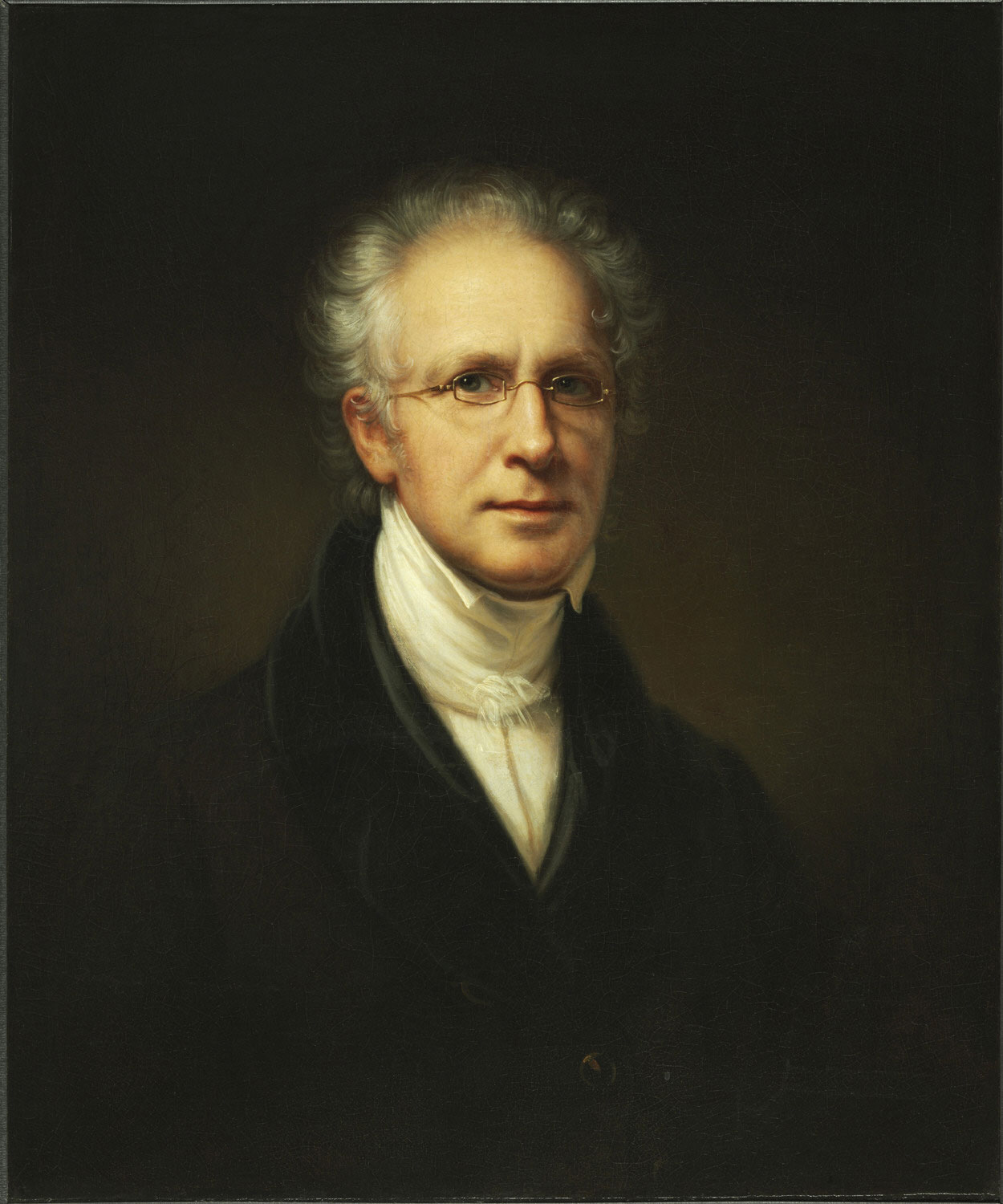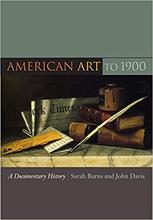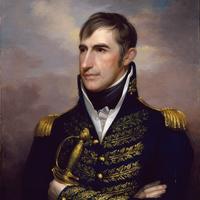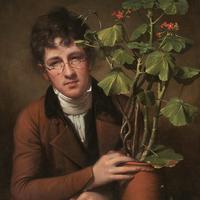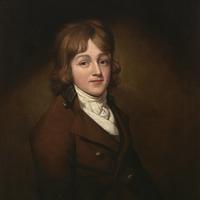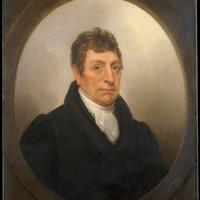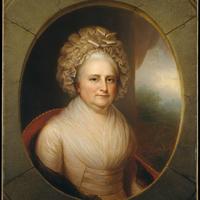More about Rembrandt Peale
- All
- Info
- Shop
Works by Rembrandt Peale

Sr. Contributor
Meet Rembrandt Peale: painter of presidents and science denier who tried to sell the American public on a girl breastfeeding her own father.
Peale was the son of the great colonial portrait artist, Charles Willson Peale. The Peales were the Kennedys of the early American art world, virtually all of them artists, and named after European masters...so, maybe more like the Teenage Mutant Ninja Turtles of the early American art world. Rembrandt got his big break at 17, when he painted a life portrait of George Washington. He later painted one of the most important images of Thomas Jefferson.
The Peales were also very interested in natural history, so Rembrandt helped dig up the first mastodon skeleton unearthed in America. Though scientists correctly identified mastodons as herbivorous, Rembrandt was convinced that, as an artist, he could “sooner and with more certainty, establish the character of skeletons, than the most learned anatomist.” He asserted that mastodons were carnivores...alternative fact! Just kidding. Mastodons totally ate veggies, just like global warming is totally real. Should’ve stuck to painting, Rembrandt.
After traveling around Europe, Peale wanted to try his hand at history painting, so he did The Roman Daughter. This painting depicts a young woman breastfeeding her own elderly father to save him from starvation. To up the ick factor, Rembrandt’s father Charles modeled for the old man. Disguising erotic, semi-nudes as sanctimonious classical scenes was a sneaky way to cater to conservative patrons’ repressed cravings for soft-porn, but the daddy-daughter suckling was just too creepy. One critic even said that “the positioning of the father’s hand at his daughter’s pelvis was unfortunate.”
Rembrandt married twice, first to Eleanor May Short, who bore him 10 children. After she died, he married his student and fellow artist, Harriet Cany. Harriet outdid The Roman Daughter in the heebie jeebies department with Her Mistress’s Clothes, a racist curiosity showing a white woman dressing up a grotesquely stereotyped African American slave girl like her personal doll. Mr. and Mrs. Peale probably should have just steered clear of social commentary, but at least Rembrandt could paint a presidential portrait like a MOFO. He's your historical Chris Brown.
Sources
- “Smithsonian American Art Museum: Rembrandt Peale,” accessed March 14, 2017, http://americanart.si.edu/collections/search/artist/?id=3725
- “Rembrandt Peale,” Encyclopaedia Britannica, last updated July 25, 2012, https://www.britannica.com/biography/Rembrandt-Peale
- “Peale, Rembrandt,” Complete Dictionary of Scientific Biography (Charles Scribner’s Sons, 2008), http://www.encyclopedia.com/people/history/historians-miscellaneous-bio…
- Amy Beth Werbel, Thomas Eakins: Art, Medicine, and Sexuality in Nineteenth-century Philadelphia (New Haven and London: Yale University Press, 2007), 18, https://books.google.com/books?id=MDcgIGK0NngC&printsec=frontcover&sour…
- “Peale, Rembrandt,” Complete Dictionary of Scientific Biography.
- “Harriet Cany Peale,” accessed March 14, 2017, http://www.schwarzgallery.com/artist/517/Harriet-Cany-Peale
- Elizabeth O’Leary, At beck and Call: The Representation of Domestic Servants in Nineteenth-Century American Painting (Washington D.C.: Smithsonian Books, 1996), 140-143.

Contributor
Before Rembrandt Peale's father was born, Grandpa Charles Peale hit some hard times in England, and may have skimmed some cash from a particular cash cow that gave him a harsh kick.
In those days, people didn't necessarily cross the Atlantic in search of fame and fortune--the Crown used the British North American colonies, like Australia, as a kind of halfway house or jail, combined with a suggestion of the Biblical punishment of exile. The British sent Grandpa Peale to the colonies, where he soon married Margaret Triggs, a schoolteacher, who gave birth a year later to Charles Willson Peale, who became a great painter in the infant U.S. and named his own children after his favorite European artists, like Rubens, Titian, Raphael, and of course, Rembrandt.
Rembrandt Peale lived from the era of the Revolution until just before the Civil War, and he spent his life making a case for the practical necessity of art. He would have debated vigorously with anyone who would have suggested, as Oppenheim and Ad Reinhardt later would, that the significance of art belongs to its ability to remove itself from an economy of practical and speculative value. Then again, Oppenheim and Reinhardt arrived at their interpretations of art by observing and criticizing the practicality-driven practice of Peale's milieu. In the family drama of art history, Peale is the engineer father, telling his kids to do art in the service of engineering, while Oppenheim and the surrealists are the pierced, band-tee-wearing teenagers, covering their ears. I tend to disagree with him, but I can't help but admire the tenacity and boldness of Peale's opening to "Graphics, the Art of Accurate Delineation," his drawing textbook, which he composed while working, like his grandmother, as a schoolteacher: "The employment of VISION, to distinguish the FORMS of OBJECTS…[to give] names to all objects...is the first purpose of education." One of Peale's main career objectives was to give an image to the name of George Washington, whose portrait he repeated, traveling to Rome with one Washington portrait, which drew huge crowds. He published a travelogue, "Notes on Italy." In addition, his heartfelt Rubens Peale with a Geranium indicates that some of his best work relates to his artistic family members.
Like the popular British painter John Martin, Peale had an ambition that went far beyond painting: to improve the creaky infrastructure of a city he loved. In Martin's case, the plan was to make a much-needed upgrade to the sewage system of London; Peale made plans to give Baltimore gas lighting. Nowadays, we often take these things for granted. As Hammons says, these unfinished works, the sketches, of an artist, are important, because they give us an uncensored backstage pass.
Sources
- Bhattacharya-Stettler, Therese, and Matthias Frehner. Meret Oppenheim retrospective: "an enormously tiny bit of a lot". Berlin: Hatje Cantz, 2007.
- Daughters of the American Revolution Magazine, Volume 14. Washington, D.C.: National Society of the Daughters of the American Revolution, 1899.
- Diawara, Manthia. "On David Hammons." YouTube, 1:23:25, Apr. 11, 2017, https://youtu.be/WhwMYkSW564.
- Gas Industry, Volume 16. New York: Light Publishing Company, 1916.
- Peale, Rembrandt. Graphics, the Art of Accurate Delineation: A System of School Exercise for the Education of the Eye and the Training of the Hand. Philadelphia: E.C. & J. Biddle, 1855.
- Peale, Rembrandt. Notes on Italy. Philadelphia: Carey & Lea, 1831.
- Thompson, Robert Ellis, and Wharton Barker. The American: A National Journal, Volumes 4-5. Philadelphia: American Company, Limited, 1882.
Featured Content
Here is what Wikipedia says about Rembrandt Peale
Rembrandt Peale (February 22, 1778 – October 3, 1860) was an American artist and museum keeper. A prolific portrait painter, he was especially acclaimed for his likenesses of presidents George Washington and Thomas Jefferson. Peale's style was influenced by French neoclassicism after a stay in Paris in his early thirties.
Check out the full Wikipedia article about Rembrandt Peale

